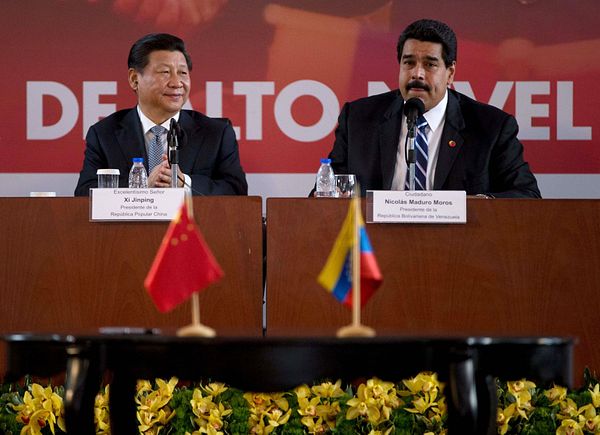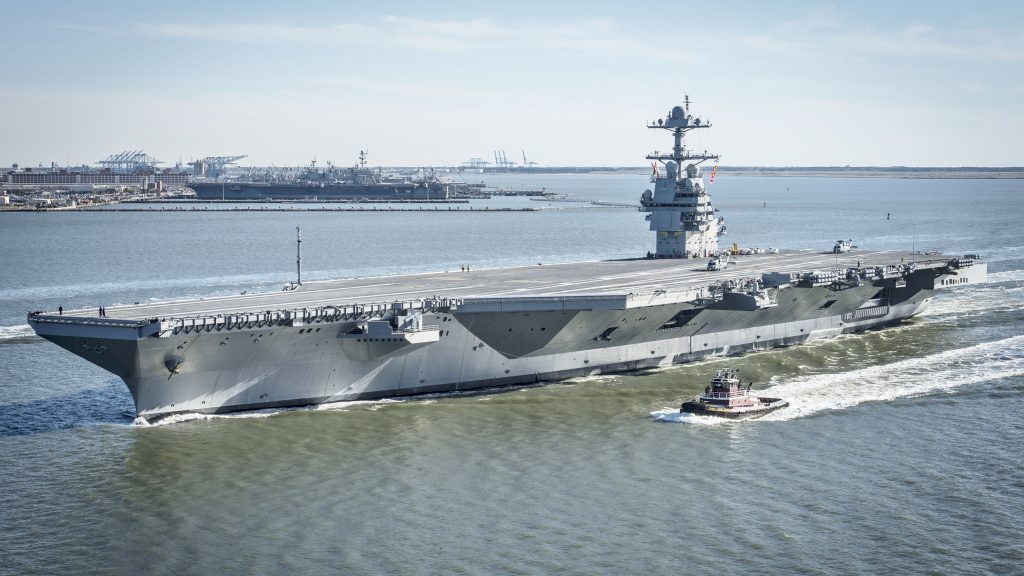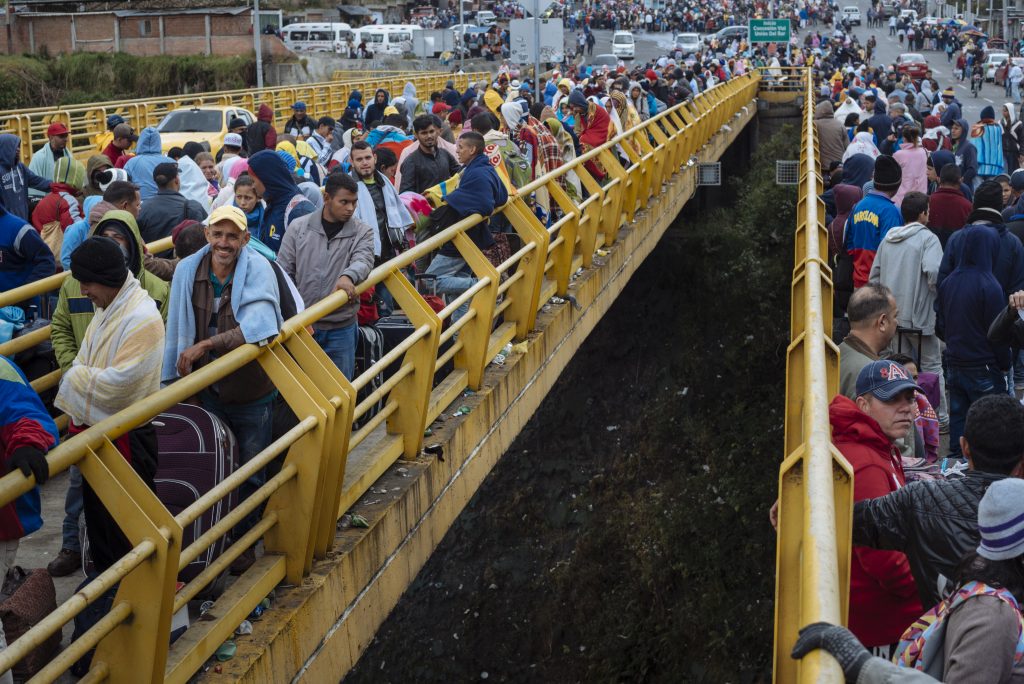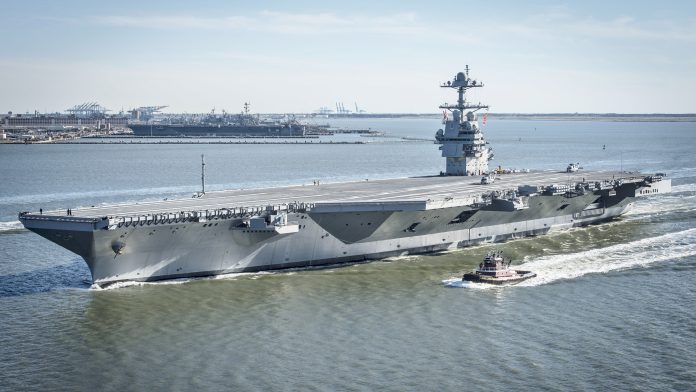
Three hours from U.S. shores, a sanctioned petrostate is turning into a nexus of great-power rivalry. As Washington ratchets up its military posture in the Caribbean, Beijing is working to lock in economic and strategic footholds in Venezuela-a country already entangled with Russia, Iran, and Cuba. The result is a combustible mix of trade diplomacy, military maneuvering, and intelligence infrastructure that might reshape the balance of influence in the Western Hemisphere.
These developments are playing out against a backdrop of humanitarian collapse and mass displacement, with nearly eight million Venezuelans driven from their homes. Yet as the human toll grows, the contest for control is ratcheting up – from tariff-free trade to satellite ground stations, and from guerrilla defense planning to private military contractors, each move signals a deeper alignment between Caracas and its anti-U.S. partners. These are nine of the key dynamics that define this high-stakes shift.

1. Zero-Tariff Pact as Beijing’s Economic Beachhead
At the Shanghai Expo 2025, Venezuela’s Deputy Minister for Foreign Trade announced a sweeping zero-tariff deal with China, which would encompass around 400 tariff categories. Although final details on how to implement this are yet to be reached, the agreement places Beijing in a position to increase exports to a market that Washington has tried to isolate. According to noted China trade analyst Gordon Chang, it will “decimate Venezuela’s local industry,” since Caracas exports little other than petroleum while importing an array of Chinese goods. To China, the pact presents an entry point into the hemisphere, but to Venezuela, it offers short-term relief at the price of deepened dependency.

2. U.S. Carrier Strike Group Tightens the Perimeter
The world’s largest aircraft carrier, the USS Gerald R. Ford, has arrived with over 4,000 sailors, dozens of tactical aircraft, and guided-missile destroyers in the area of responsibility of U.S. Southern Command. The Pentagon framed the deployment as a mission to “degrade and dismantle transnational criminal organizations,” but its proximity to Venezuelan shores has only heightened tensions. The deployment is the largest U.S. military presence in decades in Latin America, in addition to submarines, Marines, and surveillance aircraft already in the region.

3. Venezuelan Guerrilla Defense Preparations
Reports indicate that Venezuelan officers are receiving training in guerrilla-style defense in preparation for a possible U.S. attack. The mobilization of about 60,000 personnel would play into the chaos of urban Caracas, utilizing thousands of Russian-made MANPADS to contest airpower. The analysts note that asymmetric warfare is really the only plausible deterrent, with under-equipped and poorly paid conventional forces in Venezuela. Requests to Moscow for repairs and new arms deliveries in support of these capabilities hint at an intention to boost these forces.

4. Russian and Cuban Military Entrenchment
As noted by Isaias Medina III, former Venezuelan diplomat, the country has become a “forward operating base” for regimes inimical to the United States. Russia’s footprint includes over $12 billion in arms sales, defense cooperation, and Wagner-linked personnel present in exercises. Furthermore, Cuban military advisers remain embedded in security institutions, providing intelligence and operational support. This entrenched presence complicates any contingency planning by the U.S. and deepens the resilience of the Maduro regime.

5. Iranian Proxy Networks and Strategic Resources
Iran has used Venezuela as a platform for financing and logistics of Hezbollah and Hamas, with links to former training camps in Syria. Medina warns of Iranian interest in the possible manufacturing of drones and mining of uranium on Venezuelan territory. This extends Tehran’s reach further into the Americas and is another layer of complexity in U.S. security calculations in the region.

6. China’s Space and Intelligence Infrastructure
Beyond trade, Beijing has invested in strategic facilities such as the El Sombrero satellite ground station in Guárico province. Analysts draw parallels with the Espacio Lejano station of Argentina, itself part of a global network run by the Strategic Support Force of the PLA. Operating in X- and Ka-bands frequencies commonly reserved for military use these stations could support intelligence, surveillance, and reconnaissance. The dual-use nature of the technology, together with PLA control, raises concerns about monitoring U.S. and allied space assets from the Western Hemisphere.

7. Humanitarian Collapse and Mass Displacement
The health system in Venezuela imploded: more than 30 percent of the population was forcibly displaced, and the effects of acute malnutrition were widespread among children and pregnant women. Measles, diphtheria, and malaria outbreaks resurfaced. The maternal and infant mortality rate had regressed to levels seen during the 1990s. According to the UN, more than 6.5 million Venezuelans resided in Latin America and the Caribbean, placing great pressure on health and social systems in host nations.

8. U.S. Sanctions and Beijing’s Oil Calculus
Sanctions from Washington continue to choke off Venezuela’s oil exports. US threats of tariffs against countries buying Venezuelan crude disrupted shipments to China in March 2025. Beijing called those measures “illegal extraterritorial actions” without detailing how the new tariff-free deal would be safeguarded against such pressure. That just underlines the limits of what China can do to shield Caracas from US hard power.

9. Private Military Contractors as Force Multipliers
Wagner-successor units, Redut-linked cadres, and maritime security firms are some of the Russian PMCs that could provide training, advisory support, and protection to regime assets. Other possible roles may include the integration of air-defense systems, reconnaissance, and protection of logistics nodes. Although such actors will not be game changers against U.S. conventional forces, they can increase the cost of operations, prolong conflict, and allow Moscow to keep open plausible deniability.
The convergence of Chinese economic leverage, Russian and Cuban military support, Iranian proxy activity, and Venezuela’s own asymmetric defense planning-a strategic realignment of the Americas-is fast taking place. For Washington, the task at hand is not the handling of a solo adversary but the management of an interlinked cast of players using each other as levers to exploit Venezuela’s crisis. The bottom line now is whether US policy can manage to balance deterrence, humanitarian relief, and regional diplomacy before this alignment hardens into a lasting geopolitical fault line.


